University Hospital: Heart Failure and CAD in Patient J.M. Analysis
VerifiedAdded on 2022/08/18
|8
|1336
|14
Homework Assignment
AI Summary
This homework assignment presents a comprehensive case study of a 70-year-old patient, J.M., dealing with coronary artery disease (CAD) and heart failure. The assignment analyzes the patient's medical history, including hypertension and previous cardiac catheterization results, and examines the patient's presenting symptoms such as fatigue, shortness of breath, and episodes of dizziness. It also covers the interpretation of laboratory test results, including hemoglobin, hematocrit, and ejection fraction, and discusses potential causes of the patient's condition, such as anemia and hypertension-induced cardiac hypertrophy. The assignment delves into the rationale behind the patient's medication regime, including Enalapril, Furosemide, Carvedilol, Digoxin, and Potassium chloride, and addresses the importance of monitoring potassium levels due to diuretic therapy. Furthermore, the assignment provides insights into lifestyle modifications, such as dietary restrictions and stress management techniques, to help manage the patient's condition. The patient's ejection fraction of 49% is analyzed, and the assignment includes a discussion of the patient's need for a dietitian to assist in medical nutrition therapy, including sodium control and fluid intake management. The assignment also identifies specific signs and symptoms of digoxin toxicity. The assignment provides a solid understanding of heart failure and CAD management in a clinical setting.
1 out of 8
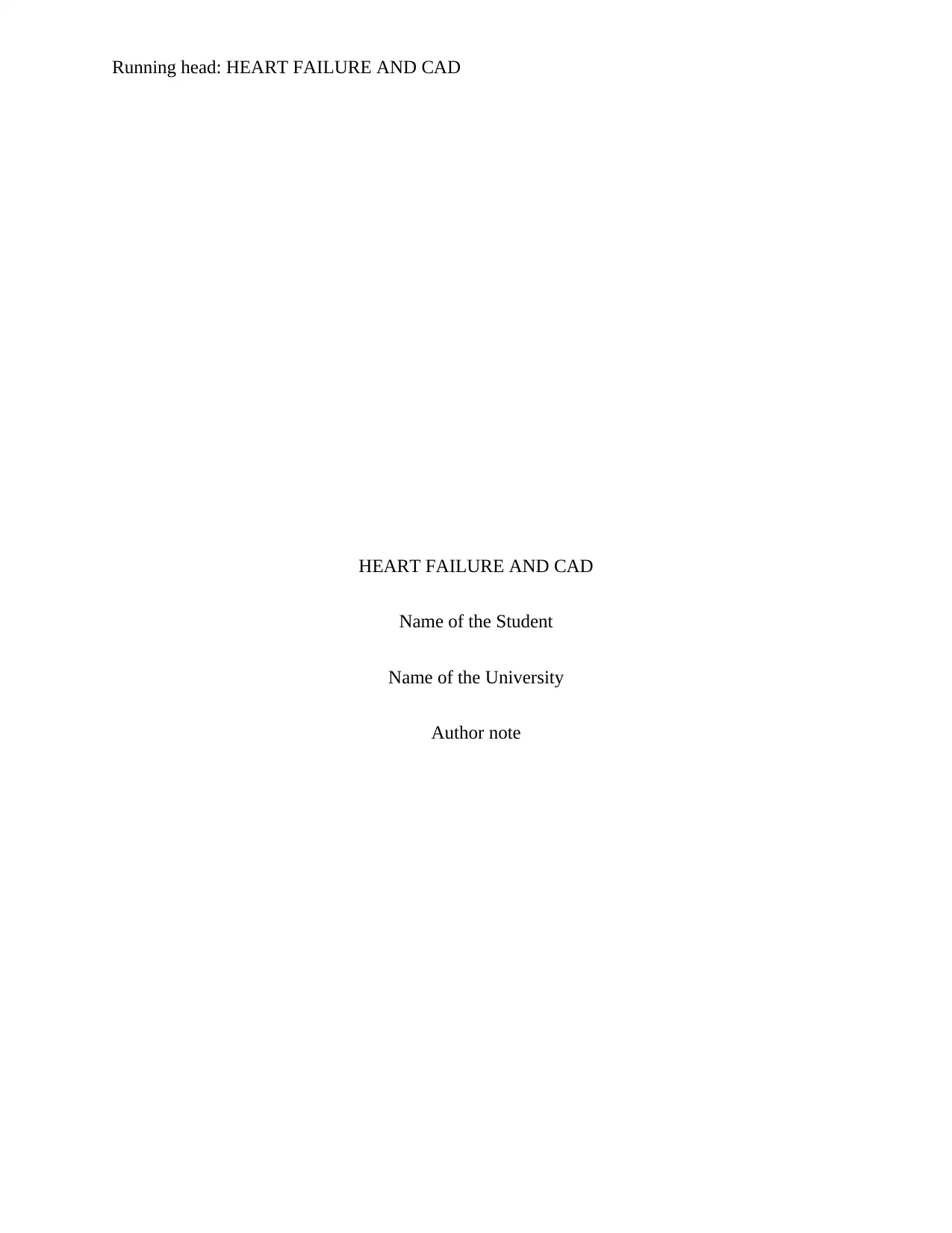
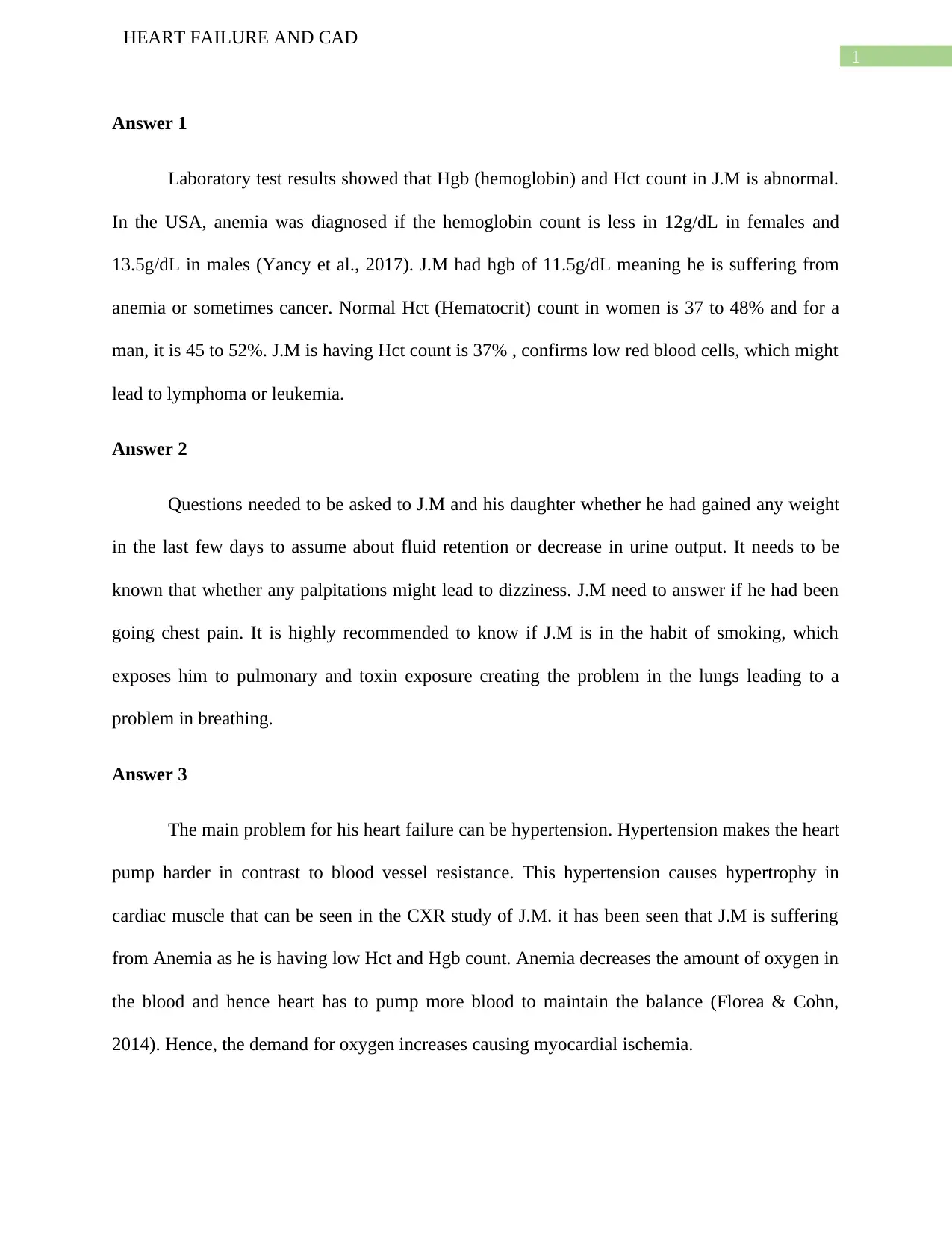
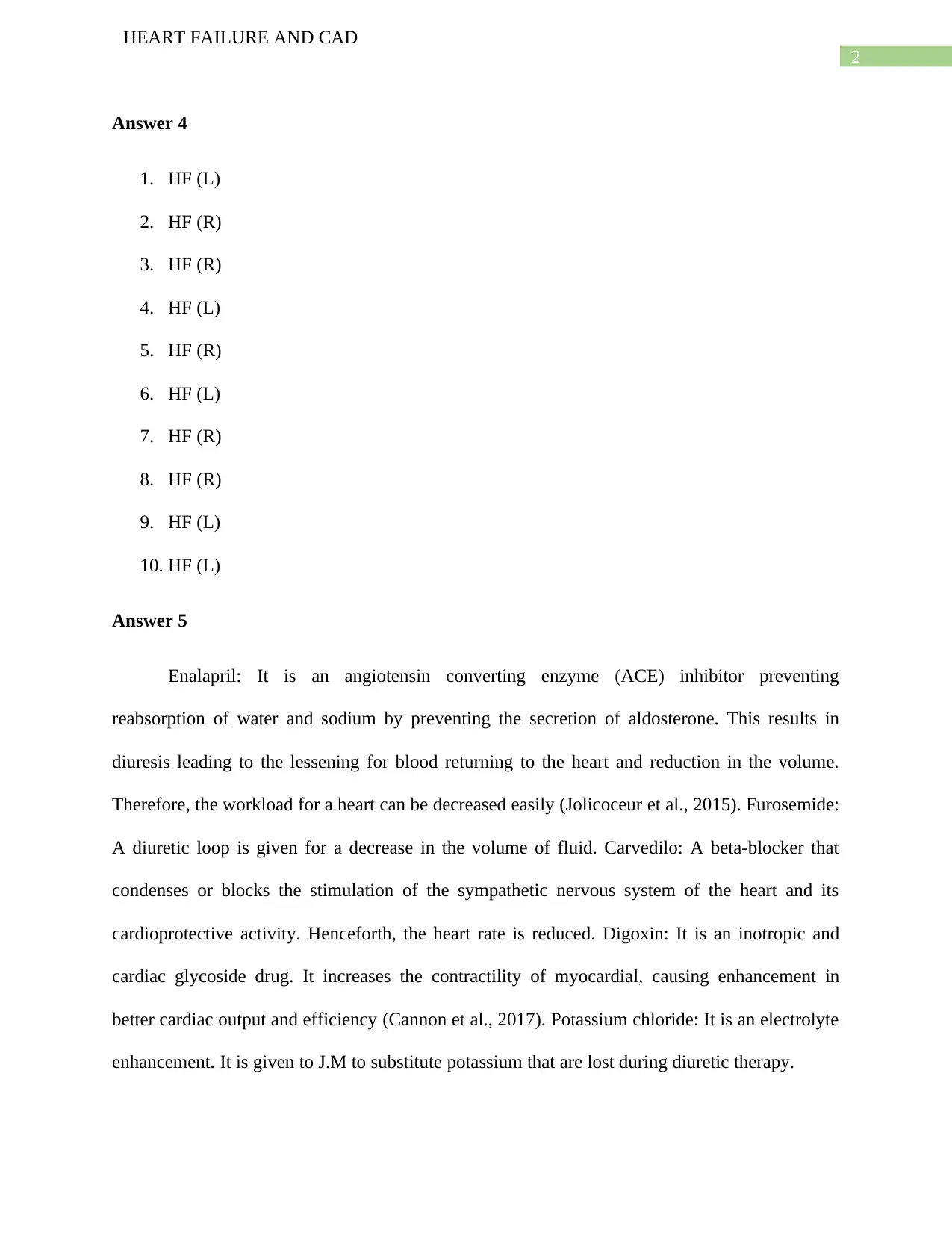

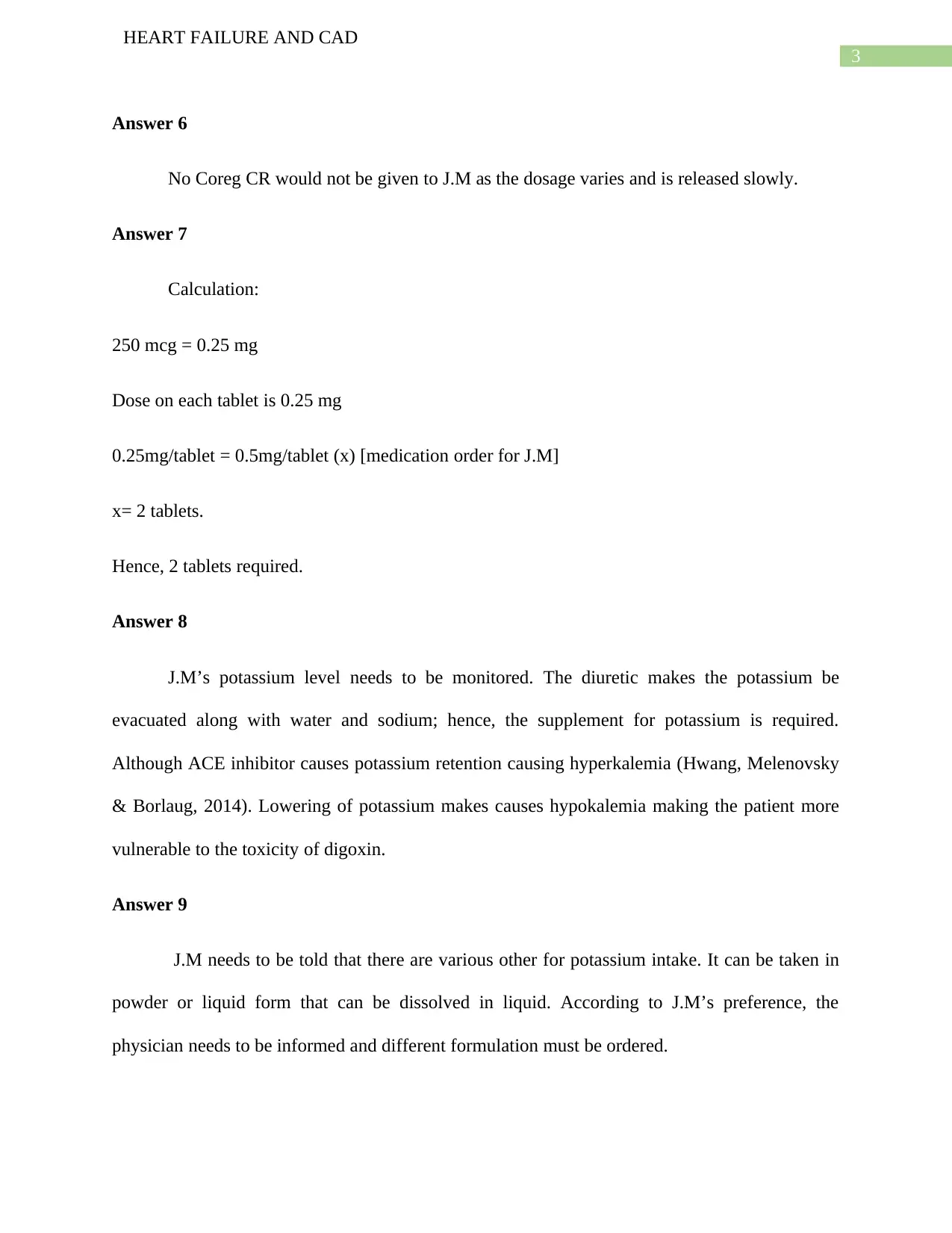
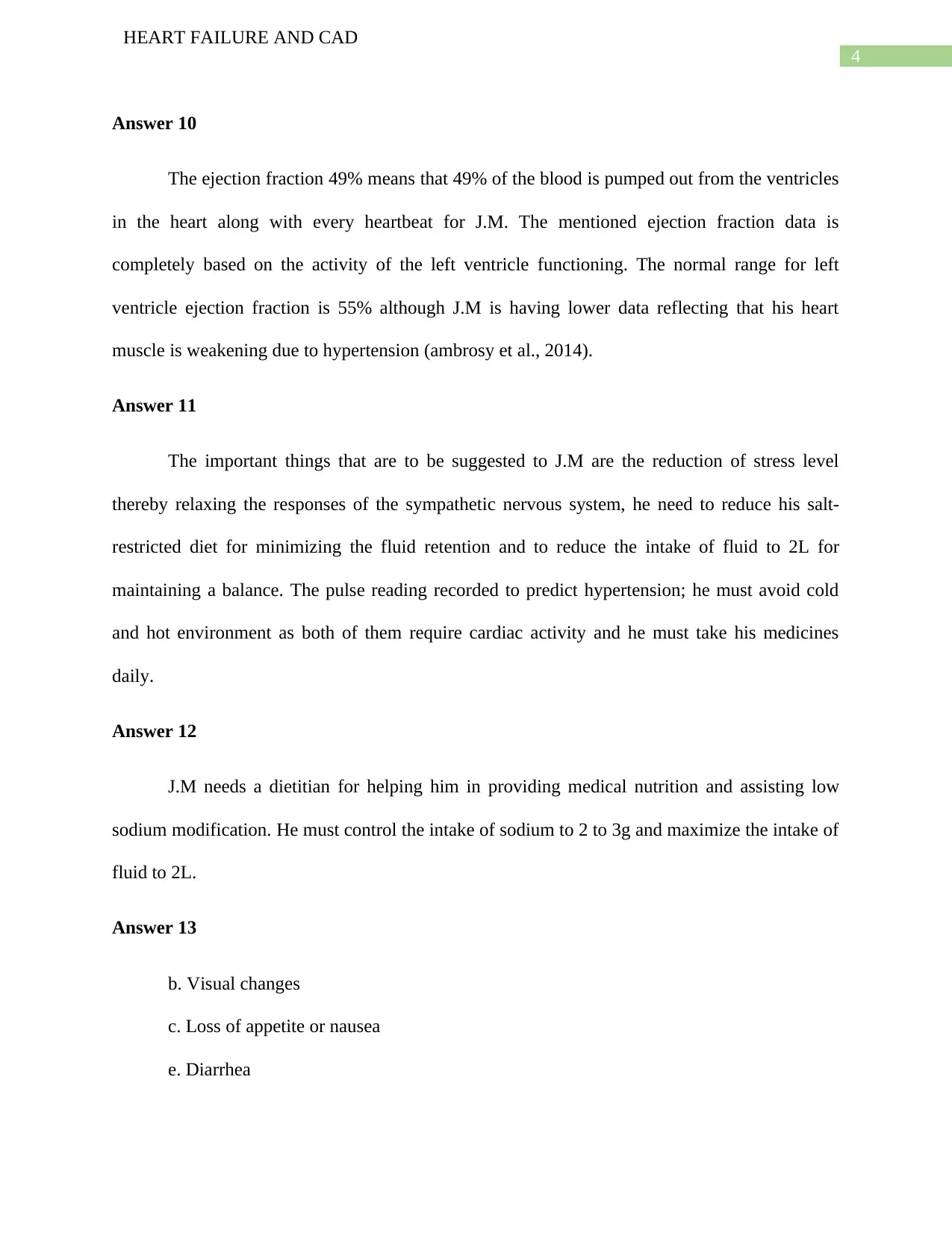

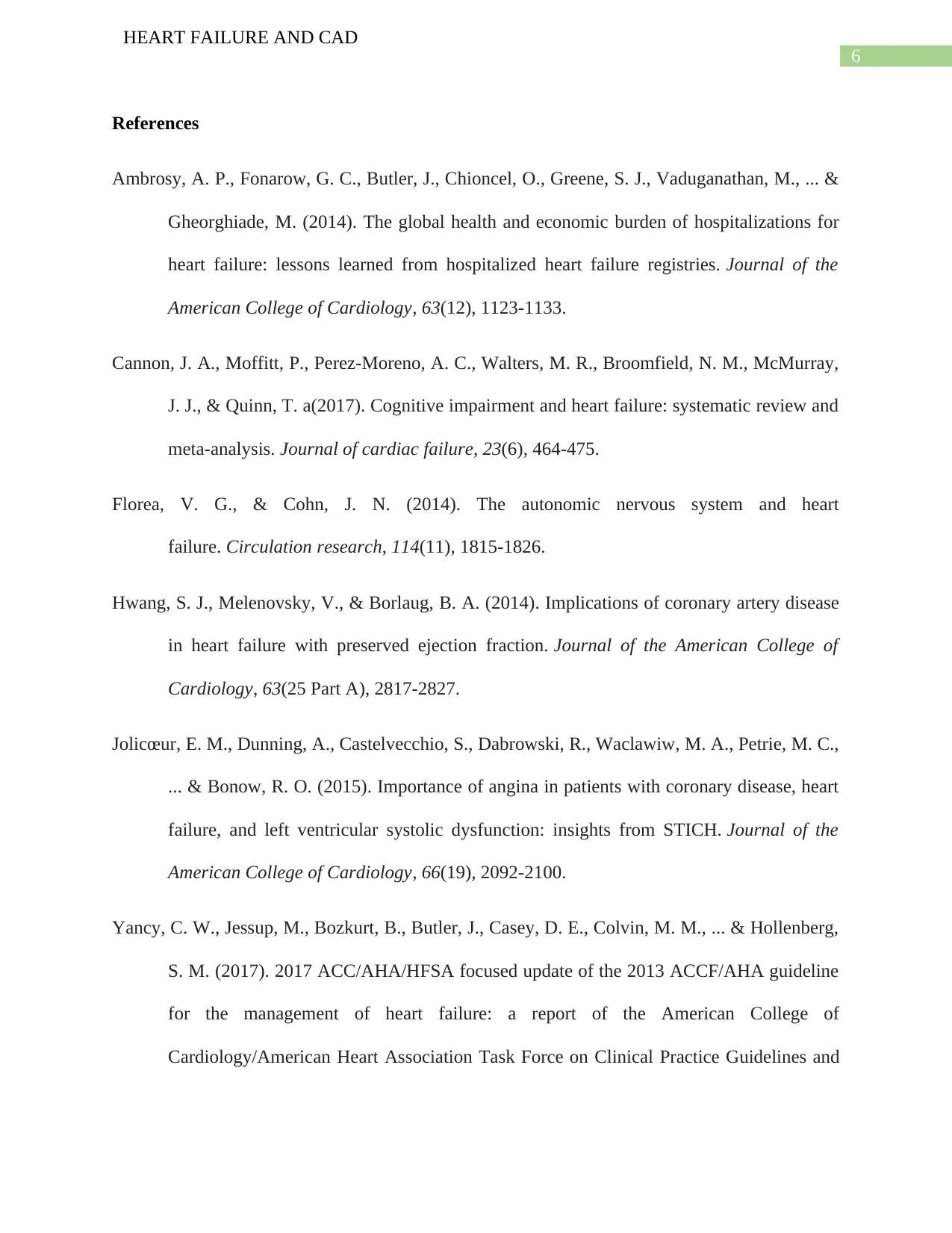
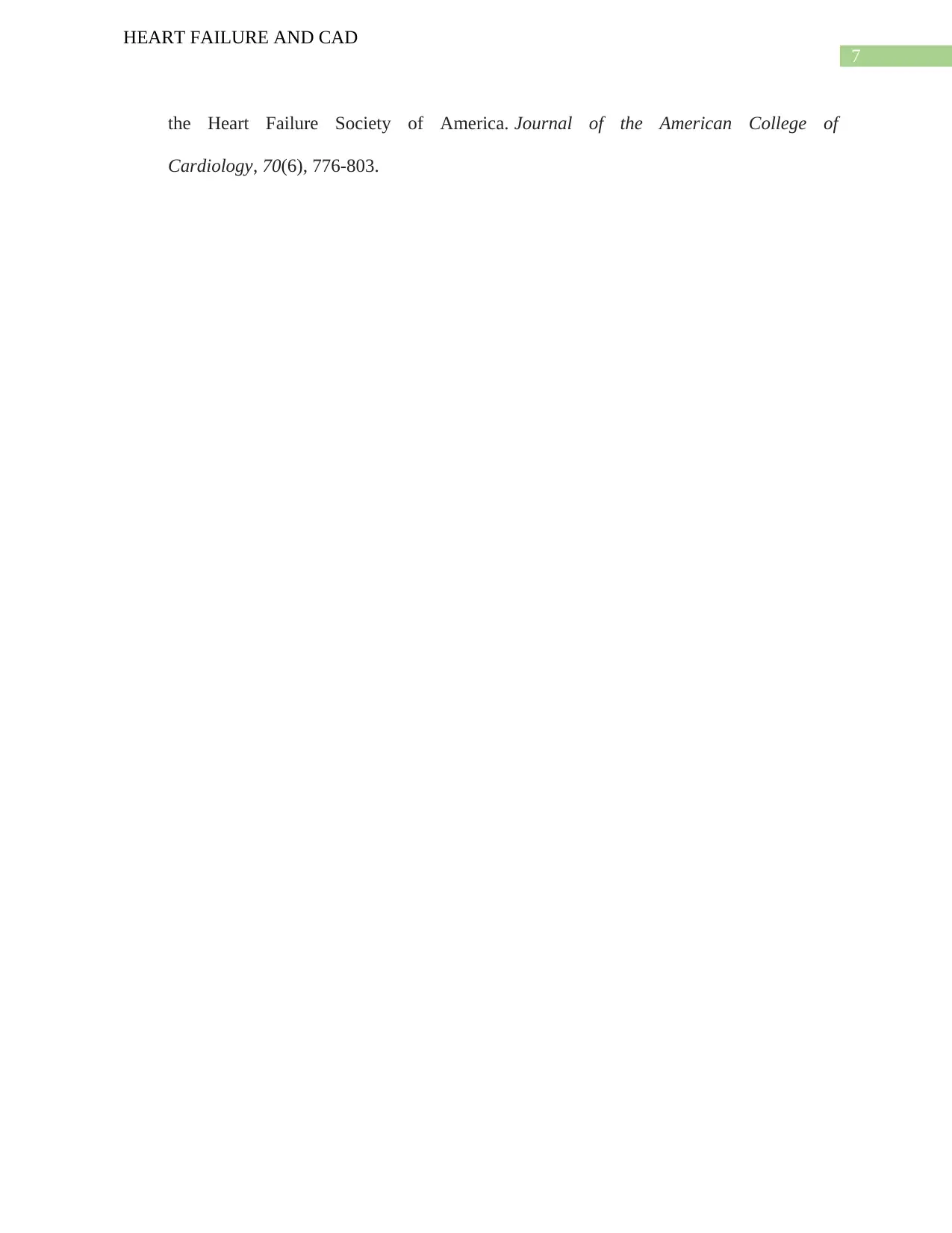



![[object Object]](/_next/static/media/star-bottom.7253800d.svg)